31 - Modern Forehand - From hi-techtennis.com - Lesson 4: The Pull, the Slot, and the Arc - The Inside Out Racket Path
The Inside Out Racket Path
Inside Out
In professional forehands, the racket head travels in an "inside out" path to the ball, creating a sudden burst of racket head speed coming into contact. Notice how the wrist angle changes dramatically from the first position, where it is laid back a full 90 degrees, to contact where the angle seems to be around 20 or 30 degrees laid back. It is this changing wrist angle that causes the tip of the racket to travel outwards before quickly coming around into contact.
Wrist Movement
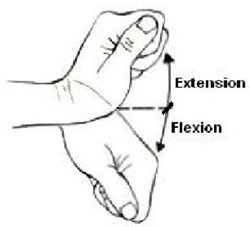
Laying the wrist back, in biomechanics, is called "wrist extension." Relaxing and letting the wrist come forward is called "wrist flexion". Using wrist extension and flexion is crucial to generating a burst of racket head speed coming into contact.
Small movements in the wrist angle cause the tip of the racket head to travel a much larger distance in an inside out direction. This creates a burst of racket head speed that turbo charges the stroke.
Rafa
Rafael Nadal gets a huge burst of racket head speed through this inside out path of the racket head. Focus on the tip of this racket as it quickly travels inside out. In the first frame, the tip of his racket is under the letter "A". In the final frame on contact, the tip of his racket is above the last "A" in the letters of "A USTA". It's a bit like he is "throwing" or "launching" the racket head inside out. Notice as well that his arm continues coming forward to the ball as the racket head whips around and "catches up." This way, he can use his arm and shoulder to power the ball on contact.
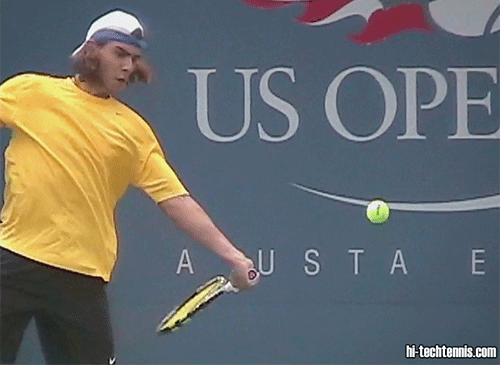
Florent Serra
Florent Serra, one of my favorite players to use as a model for forehand technique, demonstrates the inside out path of the racket coming into contact. Notice how much his wrist angle changes as it goes from full extension to flexion, causing the racket to quickly travel a large distance inside out.
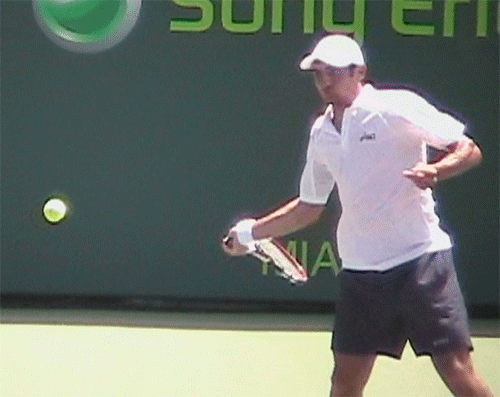
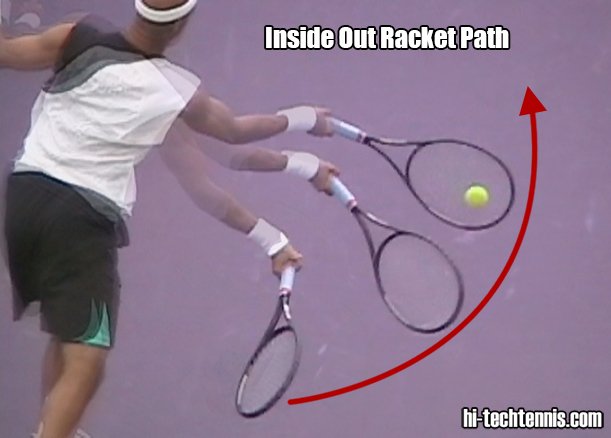
The wrist angle goes from a 90 degree laid back position to about 30 degrees on contact. This causes the racket head to travel "inside out".
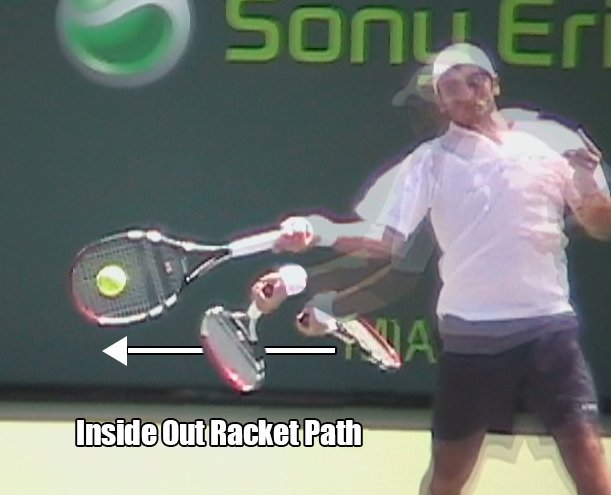
From a front angle, you can really see how much the tip of the racket whips around in an inside out direction to the ball.
Comments
Post a Comment